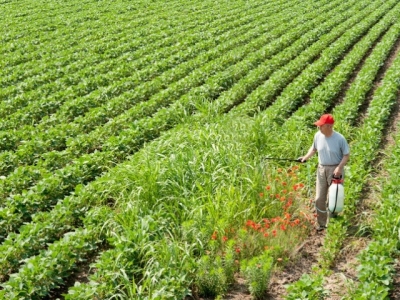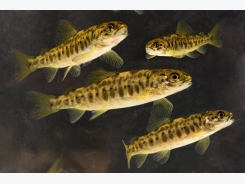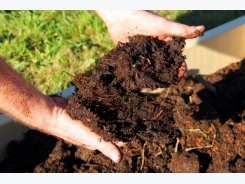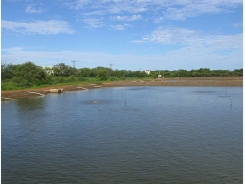Weeds present a greater challenge to feed crop production than expected

The production of soybeans see more yield damage from the emergence of common ragweed than expected, however two-pass mitigation systems may provide a way to address the problem, says researcher.
A team of researchers from the University of Nebraska and the University of Guelph in Canada examined the interaction between soybean production and growth of ragweed
The need for research into ragweed and the influence it has on soybeans was identified as a priority at the state level, said Ethann Barnes, corresponding author and graduate research assistant at the University of Nebraska. “The first situation that sparked the work on common ragweed was the identification of glyphosate-resistant common ragweed in southeast Nebraska,” he added.
The goal of the research project was to better understand the interaction between feed crop production and the weed given that herbicide-resistant common ragweed had spread to the state, he said. The project built off of his earlier research.
“We want to help them [feed crop producers] avoid disaster situations were a weed can really hurt your yields,” he said. “Again, to help them, you just have to understand the potential of the weed.”
The research team found that the weed generated high losses in the trial soybean plots, the researchers said. The first year of trials plots with ragweed densities of 2, 6 and 12m-1 per row had yield reductions of 76, 91 and 95% while the second year of trials losses were 40, 66 and 80%
“We were absolutely surprised to see common ragweed reduce yield as much as it did,” said Barnes. “When we compare it to studies in North Carolina and in Ontario, we saw quite a bit more yield loss at comparable common ragweed densities.”
The finding brings implications for producers of the feed crop especially as several parts of the Midwest had dry conditions during the winter, he said.
“With a year expected to be dry it is even more critical for soybean growers to have near weed free fields,” he said. “Whatever water the weeds in that field use, is less water for those soybean plants.”
Why examine ragweed?
The role a weed plays in feed crop production is an important element to understand, said Barnes.
“Common ragweed’s effect of soybean yield has been studied before, for example in Ontario, Canada and in North Carolina, but hadn’t been investigated in the western Corn Belt,” he said. “Common ragweed is the 8th most troublesome and the 8th most common weed in broadleaf crops (like soybean) in the US and Canada making it a very important weed.”
In Nebraska, the weed has been more common as a problem for producers in the southeastern part of the state, he added. It has always been a part of the production cycle, but the influence of the weed has not been a focus.
“With the potential of herbicide-resistance comes the potential of high densities in a farmer’s soybean field from lack of control,” he said. “If a field has no or poor control of common ragweed, then it most certainly can be a major issue – like the glyphosate-resistant common ragweed in the field that we found in southeast Nebraska was.”
Soy production and implications
In the feed crop production study, irrigated split-plots were seeded with soybeans and common ragweed, the researchers said. Crop and weed leaf area index and aboveground biomass were established and soybean yield was collected.
“Results of this study suggest that soybean-common ragweed interference resulted in substantial soybean yield loss when competing for light,” they added.
Access to light is considered to be a limiting factor where the weed could negatively influence soybean production, said Barnes.
“When we are talking about soybean or any crop where the goal is to fill the canopy and not let sunlight reach the ground,” he said. “Any weed growing amongst that soybean is going to intercept sunlight intended for the crop.”
The researchers also hypothesized that in dry conditions, ragweed would likely outcompete soybeans, he said. “Common ragweed, like most weeds, is more tolerant to water stress than crops,” he added.
“With all other factors being equal common ragweed might not grow as tall or produce as many seeds than it would under full irrigation but it would be less affected by water stress than soybean and soybean would become less competitive relative to common ragweed with added water stress,” he said.
It is hard to know where the tipping point from access to light or water would be in the competition between the two plants, said Barnes.
“The degree of water stress and degree of competition (number of weeds) would determine if competition for water was more limiting than competition for light,” he said. “There is definitely potential that the most limiting resource switches from light competition to water competition but it’s hard to say where that tipping point it.”
During the trial regular rainfall eliminated elements of water stress research, the researchers added.
Additionally, it can be a challenge to predict the degree of yield loss early in a growing season, he said. “There are too many factors involved to be very accurate in predicting yield loss from weeds that early in the season, but we hope that this study is a step in that direction,” he added.
There are, however, steps that producers can take to minimize the growth of common ragweed in their soybean acres, said Barnes.
“First, it is important to know your field,” he said. “When does the common ragweed emerge in your area? In Nebraska, it emerges early in the spring so we suggest using a pre-plant burndown before planting and follow it up with a post-emergence herbicide after the crop has emerged.”
The dual-pass programs have been demonstrated to control weeds and allow for maximum profit from production of the feed crop, he said. But, there can be variation based on emergence pattern and the presence of other weeds.
Source: Agronomy Journal
Authors: E. Barnes, A. Jhala, S. Knezevic, P. Sikkema and J Lindquist
Related news
Tools

Phối trộn thức ăn chăn nuôi

Pha dung dịch thủy canh

Định mức cho tôm ăn

Phối trộn phân bón NPK

Xác định tỷ lệ tôm sống

Chuyển đổi đơn vị phân bón

Xác định công suất sục khí

Chuyển đổi đơn vị tôm

Tính diện tích nhà kính

Tính thể tích ao




 Revisiting ionic imbalance in low-salinity shrimp aquaculture
Revisiting ionic imbalance in low-salinity shrimp aquaculture  Environmental Trigger For EMS Identified In Shrimp Ponds
Environmental Trigger For EMS Identified In Shrimp Ponds